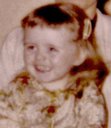Rosina Lippi's Blog, page 11
March 6, 2016
Back to Scotland: Dawn on a Distant Shore
I had a comment from Liz to my last post, asking about my decision to set part of Dawn on a Distant Shore in Scotland. It was a good question, but I think I need to answer it more fully. So here goes.
The reason I sent the Bonners to Scotland in Dawn on a Distant Shore is really quite simple or at least, it started out that way. I had this crazy idea that it would be funny if it turned out that Hawkeye was of high birth.
At the time I was in contact with Frederick Hogarth, an expert on heraldry and genealogy of the British Isles, and formerly the editor of Burke’s Peerage. I asked his opinion on how I could pull off giving Hawkeye this backstory.
Mr. Hogarth is an incredibly generous person, and he went to huge amounts of trouble to show me how to handle this. He came up with the family crest and all the bits and pieces, provided me with the layout of Carryckcastle, including blueprints and sketches, and pretty much constructed a complicated family tree. It was so interesting to work through all the details that I had a really good time pulling it all together. Now, if he had told me there was no realistic way to structure the backstory, I would have let it go. But his enthusiasm and extraordinary support made it all possible.
After answering Liz’s question I asked myself what had become of all the images and information that Mr. Hogarth provided. His website (Baronage) is still in existance, but hasn’t been updated since 2007. I haven’t been able to find out what happened to him, sorry to say.
But I can say with complete surprise that the information about Dawn on a Distant Shore posted in 2002 is still there. How’s that for a shock? Given the age of the Baronage website I’m reproducing some of that page here for posterity. It also gives me another opportunity to thank Mr. Hogarth and acknowledge his tremendous contribution to bringing the backstory together.
From the Baronage website, by its editor:
To produce plausible, fully-rounded characters an author will often compose substantial back-stories that shape their novels without actually appearing in them. In her best-selling series, of which the first titles were Into the Wilderness and Dawn on a Distant Shore, Sara Donati wove a hidden tale that created the fascinating situations in which her characters fought for their lives, but one of which readers are only dimly aware. The arms of one of her principal characters tell some of this story, and Miss Donati has kindly allowed us to publish it.
The introductory pages of the second book, Dawn on a Distant Shore, feature a family tree showing the descent of the 4th Earl of Carryck from the 5th Lord Scott of Carryckcastle, his great-great-grandfather killed in the service of Charles II, but the backstory begins several generations earlier with Sir Colin Campbell of Glenorchy. (In this summary the historic characters will be printed in red.) [Note: I have adjusted the colors to make the distinctions clearer.]
Glenorchy’s elder brother was the ancestor of the Earls and Dukes of Argyll, and his own eldest son was the ancestor of the Earls of Breadalbane. (He himself is recorded in history as one of the cleverest and most unprincipled rogues of his century, at a time when clever and unprincipled rogues were active everywhere.) From his third wife, Margaret Robertson, he had a daughter Margaret who married David Johnstone of Carryckcastle, from which marriage there was an only child, Catriona, and from his fourth wife he had a son, John Campbell of Auchreoch, who was killed at Flodden in 1513.
John Campbell of Auchreoch had a bastard son, John Campbell, who was badly wounded at Flodden, escaped, and was nursed back to health by a girl, mute from birth, Mary Scott, with whom he fell in love (as very sick patients tend to do). Her father also had been killed at Flodden and she was in the care of her great-uncle, Walter Scott of Ballerlaw, who, when he learned that the two wished to marry, settled his estate on them on condition that John Campbell took the name of Scott. (Such arrangements were not then uncommon.)
Let us look at the heraldry so far.
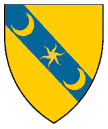
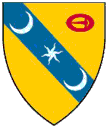
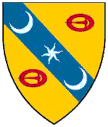
Scott of Buccleuch,
the Chief of the Scotts
Scott of Ballerlaw,
a distinct branch from early times,
differenced by a buckle and a change
in the tincture of the bend’s charges
a break in the male bloodline
The idiosyncratic addition of the second buckle (above right) reminds us that the laws of heraldry as we interpret them today were not yet, in the early sixteenth century, set in concrete. The new John Scott of Ballerlaw remembers he was born a Campbell and seeks to be not quite a Scott. (This Campbell link is a critical factor in the story.)
The new Laird of Ballerlaw and his wife, Mary, have a son, Robert, who marries his first cousin once removed, the heiress Catriona Johnstone of Carryckcastle. Subsequently he is created Lord Scott of Carryckcastle by James V, and the following year he entails his lands on his successors in that title, which failing to his nearest heirs bearing the name of Campbell and of the blood of his paternal grandfather John Campbell of Auchreoch.
Let us now look at Catriona’s arms.



Johnstone of that Ilk ~ the undifferenced arms
An early branch makes the chief black, and another cadet line then makes the cushions silver.
Johnstone of Carryckcastle ~ yet another cadet line replaces one cushion with a crescent.
The eldest son of Robert Scott and Catriona, Robert, 2nd Lord Scott of Carryckcastle, quarters his mother’s arms ~ with Scott of Ballalaw in the 1st and 4th quarters, and Johnstone of Carryckcastle in the 2nd and 3rd quarters. He marries Jean Scott of Balweir; their son, the 3rd Lord, marries Flora Johnstone of Craigieburn; and their son, the 4th Lord, marries Mary Scott of Glenkerry, whose son, the 5th Lord begins the family tree printed in Sara Donati’s second book.
The 8th Lord, Roderick Scott, 3rd Earl of Carryck, marries Appalina Forbes, an heiress whose arms we shall next consider.
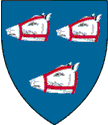
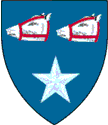
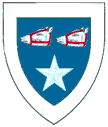
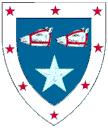
Lord Forbes
Chief of Clan Forbes ~
the undifferenced arms
An early branch replaces a charge with another, a mullet for a bear’s head
A younger son later takes abordure argent for difference . . . . .
. . . . .subsequently another cadet charging the border with red mullets.
The marriage with Appalina brings into the family not only the Agardston estates, but also her father’s shipping fleet and her unmarried brothers’ fortune made from trading in the American colonies, both ingredients essential to the story. However, our interest is in the Forbes of Agardston arms which Alasdair Scott, the 4th Earl of Carryck and 9th Lord Scott of Carryckcastle, places in the 3rd quarter.
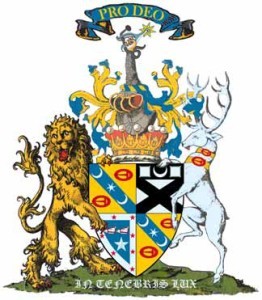 The composition of the Earl of Carryck’s arms reflect the changes down the centuries and offer a good example of how many of the arms of our older families have developed. It should be noted that the 2nd and 3rd quarters are the arms brought in by heiresses, not just arms of families with which the Carryck lords have married.
The composition of the Earl of Carryck’s arms reflect the changes down the centuries and offer a good example of how many of the arms of our older families have developed. It should be noted that the 2nd and 3rd quarters are the arms brought in by heiresses, not just arms of families with which the Carryck lords have married.
So here you have it, Hawkeye’s genealogical backstory. This is what made the telling of the story in Scotland possible.
Tweet
The post Back to Scotland: Dawn on a Distant Shore appeared first on storytelling.

February 28, 2016
The Surgeon Murders: Whodunit?
The question that is raised most often in response to The Gilded Hour is this: who is responsible for the murders? The full story will be revealed in the sequel, but you can review the official documents and come to your own conclusion, if you wish. You’ll find them here: The Surgeon Murders Investigation.
Tweet
The post The Surgeon Murders: Whodunit? appeared first on storytelling.

February 6, 2016
Whatever became of Will and Amanda Spencer?
Petzi asked a question I had been expecting to hear sooner or later. She wonders about Elizabeth’s cousin Amanda Spencer and her husband, William Spencer, Viscount Durbeyfield and what happened to them. The last time you saw the Spencers was in Lake in the Clouds; they lived in Manhattan with their son, Peter.
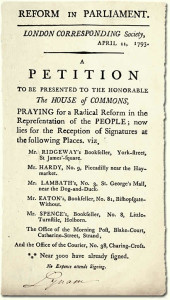 Amanda is the daughter of Elizabeth’s indefatigable Aunt Merriweather. She and Will relocated to New York city from England in large part because Will was implicated in the London Corresponding Society, a group that advocated reform on the French model. If he had stayed in England he could have been arrested by the Crown on charges of high treason. Of course, that wasn’t quite threatening enough to keep Will out of England when his cousin needed him (Fire Along the Sky).
Amanda is the daughter of Elizabeth’s indefatigable Aunt Merriweather. She and Will relocated to New York city from England in large part because Will was implicated in the London Corresponding Society, a group that advocated reform on the French model. If he had stayed in England he could have been arrested by the Crown on charges of high treason. Of course, that wasn’t quite threatening enough to keep Will out of England when his cousin needed him (Fire Along the Sky).
The Spencers lived just opposite Battery Park when the area was was home to the rich and fashionable. Will was a couple years older than Elizabeth, and Amanda a few years younger.
Will and Amanda are, of course, long gone by 1883. Peter was born in 1795, and is no longer in Manhattan, if he’s alive at all.
Sometimes I work out a full story line for a character, and sometimes I don’t. By not setting down a firm storyline I leave some room for plot development. So the answer to Petzi’s question is: I dunno. Not yet, at any rate.
Tweet
The post Whatever became of Will and Amanda Spencer? appeared first on storytelling.

January 31, 2016
Gilded Hour, New York & Your Family History
I have heard from more than a few Gilded Hour readers who wonder about their own family history and how to find out more. For example:
…Our great-grandmother, [name], was a doctor in NYC at around this time, so it was truly interesting, and sobering, to read about some of the things she may have endured as she pursued her chosen path. We do not know much about her during this time in her life, and I would like to learn more. Any suggestions as to the best places for me to look to track her down?

Women’s Medical College of Pennsylvania, Philadelphia, 1892. “In diaries and letter from the late nineteenth century, women medical students sometimes wrote of their resolve to prove that they could engage in all aspects of medical study and practice without compromising dignity or sacrificing the appearance of femininity. The choice of dress for the dissecting room was one common subject in such reflections.”
This is a big question, and the answer depends on how much time, energy, and money you want to invest in the search for information about your relative. There are hundreds of online resources for genealogical inquiries, of course. Dozens of them provide good tutorials on how to get started. For someone without any research experience who has a fairly limited question they’d like to answer, I would suggest the following steps:
Gather as much information as you can from living family members and documents. Dates and places for all four grandparents and all eight grandparents, whatever you can find. Even if it’s conflicting, you need to keep track of it. Make sure you get older relatives to cough up birth certificates that may be gathering dust in an old desk.
When you have as much information as there is to get from family members and resources, sit down and make a list of what you don’t have for the four grandparents and eight great grandparents. Dates and places of birth, death, marriage, parent and children and sibling names etc.
Depending on how deeply you want to pursue this, start tracking down those documents. Say you know that a grandfather was born in Buffalo in 1920. There are ways to track down his official birth certificate and to request a copy. It will cost a couple bucks, and take a little time. Whether or not you want to take this step, you can move on. This research step may become easier if you decide to pursue the suggestion I’ve made below.
Once you know something about the relative who interests you most (for example, this reader’s great grandmother who was a physician in New York city in the late 19th century) the single biggest source of information would be the census. The 1880 census is a great source of information. How to get to it, and how to read it — that’s another issue. If you think you’ll be satisfied with tracing down Dr. Great Grandmother alone, then here’s my suggestion: sign up for a free month at ancestry.com, and then do not waste a minute. Put Dr. Granny in as the first person in a family tree with whatever information have (dates of birth, death, etc) and do a general search. Focus on the census to start. Ancestry.com will show you both the actual census page (which you can save and/or download) as well as the transcribed data. Read what you find carefully. Look up the address on a map (more on this if you’re interested). Consider her neighbors (other doctors? More of your relatives?). You can find maps of the city neighborhoods for the same time period, so look at where she lived, and see if there are clinics or hospitals nearby.
Once you find one trace of her on Ancestry.com, you’ll be able to pick up all kinds of hints. Add it all to her on the family tree you created, but this is important: download everything you find too (as you’ll only be there for a month), and figure some way to organize it electronically even if it’s only everything in one file.
Now you’re at a crossroads. Say you’ve found Dr. Granny in five different censuses, you’ve got a lot of information but you still don’t know about where she went to medical school or practiced medicine. At this point you have to settle in for some serious research. If there’s interest, I can go into this in more detail on this at some point.
To make a point, I put this Dr. Great Grandmother into both the Ancestry.com and Google, and hit pay dirt right away. I found her obituary in The Journal of the American Medical Association, Volume 75 (1920), and with the dates I got from that source I went to Ancestry and got a (1) a listing in a medical directory when she was still in practice, with information about her medical school, etc. (2) a family tree with sources, and from there (3) her 1880 Census entry. I’ve blocked out the names because I don’t have permission to share that information–I did this on the fly.

The census is especially interesting.

In 1880 she was 17, married, with a six month old child, and she’s listed as keeping house. How she got from that place in her life to medical school — that would be an interesting story, one worth pursuing. Just to be clear: this was a tremendously easy search. Most are not.
Tweet
The post Gilded Hour, New York & Your Family History appeared first on storytelling.

January 28, 2016
I’m Teaching at the Chuckanut Writers Conference
The annual Chuckanut Writers Conference takes place this year from Thursday to Saturday, June 23-25. And I’m teaching. Or actually, Sara’s teaching. But I’ll be there too. I don’t do much teaching these days and I miss it, so I’m looking forward to this.
What I’m teaching
Ventriloquism on the Page
Master Class with Sara Donati
Thursday 1:00-4:00 pm
In the late eighteenth century a performer appearing on a London stage advertised his act as a curious discussion between himself and Little Tommy, an invisible friend. The performer was Joseph Askins, who was to become one of the earliest popular stage ventriloquists. Askins didn’t have a puppet called Tommy sitting on his knee. Instead he convinced his audience that he was having a conversation with a personality separate and distinct from his own, sitting just out of sight. He did this by throwing his voice.
In creating characters, the writer must throw her voice. If she does her job well enough the reader suspends disbelief and accepts the many voices on the page as distinct beings separate from each other and the author herself. In this master class for intermediate to advanced writers, we will look at what goes into our kind of ventriloquism. Before you can throw a character’s voice, you have to be able to hear the character, and characters are not always forthcoming. We’ll be considering a couple ways to make reluctant or shy characters speak up, and we’ll experiment with throwing them.
Tell Me Who You Are: From Photo to Backstory
Friday 2:30 – 4:00 | Breakout Session 2
Some writers will tell you that everything begins with character. If you have built strong characters, this theory goes, you can set them free to interact on the page and a story will construct itself. Except readers want story. It’s the most important thing, the reason they pick up the book to start with. If you don’t have a story to tell, you’ll lose that reader very quickly. Character and story are equally important, I would claim, and you can’t develop one without the other. We’ll start with a series of photographs I bring with me, and we’ll talk about what we see in a given face. In short writing periods, we’ll construct very short backstories for each of the faces, and then ask volunteers to share what they’ve come up with. Some exciting and unexpected characterizations have come out of this exercise, often times in ways that surprise the writer him or herself. We’ll have time for five or six backstory writing prompts, but you will go away with a dozen new characters in your head.
There are a lot of interesting sessions this year, so please have a look. If you have questions about my two classes, I’ll do my best to answer them.

Tweet
The post I’m Teaching at the Chuckanut Writers Conference appeared first on storytelling.

January 26, 2016
Why Anna and Sophie? On Creative Process.
I had an email from a reader not so long ago with an interesting question. Of all the children, grandchildren and great grandchildren descended from Nathaniel Bonner, why did I chose to focus on Anna and Sophie? The reader wasn’t upset about this, as I read it. Just curious. Curiosity is catching, in my experience and the question got me to thinking. Except there’s no easy answer: creative process is a complicated thing.
The result is that I am about tell the story of 2010-2013. This is summarized and truncated to the extreme, but it is necessary to answering the actual question.
Back Backstory
The Mathematician’s job disappeared about a year after the 2008 crash — or at least, he was reduced to less than 50 percent, so all our benefits disappeared. And we have some chronic conditions in the family, so this was a big deal. At the same time publishing was in free-fall, and two novel proposals were turned down flat by publishers who had been really happy with my work to that point.
The logical conclusion was that I should go on the job market and so for the next three years I focused on writing not fiction, but job applications (pretty much a full time occupation in itself). Now, I didn’t think it would be easy, and I knew that I had to be ready to do things I wouldn’t have considered ten years earlier, but health insurance was so important (we were paying a huge amount in monthly premiums for just average coverage at this point, on much reduced income), I went ahead and started applying for jobs. In the first year I applied only for jobs within driving distance of where we are now. I’ve got all of this recorded, but to be honest, I have no interest in revisiting that data, so I can say only approximately that I applied for about 200 jobs in that first year, had three phone interviews, and no offers.
It’s possible I could have found work if I was willing to accept something with no benefits, but the whole reason I was giving up writing had to do with health insurance. To take a job at $12 an hour — without benefits — made no sense.
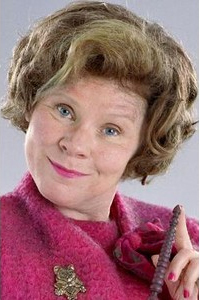
Someday I will tell this story.
So in the second year I did two things: I started applying for jobs further away, in places where we could realistically live. I also took a whole series of courses at the local technical college in medical coding, which required courses in everything from anatomy and physiology to the actual coding process Here I digress:
Did you know that there is an official International Classification of Disease code for misanthropy? ICD9 301.7. Really, you can see for yourself.
So the plain truth is, I loved the material — I really did — and it wasn’t a hardship to take these classes. If not for Dolores, I think it might have all worked out. Sometime I have to write about the experience, because the one person who taught all the coding classes was a Dolores Umbridge clone, minus about 3o IQ points. Let’s just say that we did not get along.
I was still applying for jobs while I took classes. Still not getting anywhere. Through some former colleagues I checked to make sure that my letters of rec weren’t the problem, and after consulting with lots of professional HR types and showing them my cover letters, etc., etc., I gave myself a pep talk and set out again.
I know you’re wondering about my many years in higher education, but there was no way to get back into academia. I had lots of encouragement from former colleagues, but encouragement is a long way from a job offer. University jobs were not within reach, because (1) there weren’t any within reasonable distance; (3) there weren’t any within any distance at all and (3) I had been away for ten years at that point. So even if (1) and (2) weren’t the case, the odds were not in my favor. Wait, I almost forgot (4): Age is an issue. Not one I could prove, but it was definitely a strike against me.
So the idea was the with retraining I could find a job in a local hospital, where the benefits were pretty good. My wildest dream (and this shows you how worried I was): I could find a 60 percent position, qualify for benefits, and be able to start writing again.
And of course none of that happened. There is more to this, of course, but I’ll spare you (and me) the details. It had little to with the creative process, and a lot to do with frustration.
In the third year I paid lots of money to a HR consultant, restyled everything, and started applying for jobs that would have meant moving far away. Some of the jobs really interested me, but nothing happened. For example: a job with the National Endowment for the Humanities, and another, in D.C. with the Peace Corp, for a writer/editor.
Have you ever looked at what goes into applying for a job with the federal government? Don’t, is my advice. It took me three days to get the application together (17 pages in all), which included a whole range of questionnaires and long essay questions. After you submit the application, if your score is high enough (they quantify everything) you’ll be notified that your application has been forwarded to the selecting official. On this particular application I got a score of 98% — and I still did not get even a phone interview. This probably had to do with the fact that veterans (very deservedly) get a ten point boost when they apply for a job. I do not begrudge veterans those ten points, but to score a 98% and never hear a word from them, not even a letter of rejection — that was dispiriting. Shortly after that point I realized I was not going to get anywhere, and I turned back to writing. Which meant turning the creative process back on. And that’s a lot like priming a pump.
So I sat there in front of my computer and debated about where to start. I made lists and notes and argued with myself. I considered multiple approaches, all the time keeping in mind that whatever I wrote, I had to be able to sell it. And that it would be at least two years before I saw any money. I was still pretty outraged about Umbridge, and one day it occurred to me that I could put all those courses to use anyway, if I had a medical theme.
Bottom Line
Umbridge was the first step toward Anna and Sophie. They ended up in Manhattan in 1883 because I have always been interested in New York city history of that period, and it was chock-full of potential storylines, medical and otherwise. I did consider writing Birdie’s story, set in New Orleans, but in the end Anna and Sophie and Manhattan just worked better for me. I may, someday, write Birdie’s story. But don’t hold your breath, please.
Tweet
The post Why Anna and Sophie? On Creative Process. appeared first on storytelling.

January 13, 2016
On Turning 60
What follows is a list of things, good and bad, I have learned or come to accept about myself or life more generally.
I put this together primarily for posterity (that is, my daughter), but I decided to post it here, too. Tucked under James Taylor, so you might miss it altogether, and that’s fine, too.
Above all things I admire and respect generosity of spirit, thoughtfulness, and integrity.
Things I will never learn to appreciate and have given up on (note that these are not things I hate. That would be a different listing altogether): lima beans, kale, oysters, marshmallows, beets, chess, the mystery genre, Monopoly, William Faulkner, South Park, Family Guy, football.
I am impatient with the incompetent, and intolerant of the willfully ignorant. Delusional people and magical thinkers bring out my misanthropy. The other way to look at this is that I have completed my training to be a cranky old woman. With honors.
Hypocrisy, moral cowardice, arrogant and prideful ignorance make me retreat in disgust. This often makes me look insensitive, superior and condescending when what I am, primarily, is frustrated. With the less fortunate I can and will gladly curb both impatience and intolerance.
I have no talent for music.
OCD runs my life, much of the time.
The older I get, the more I avoid meeting new people. I am uncomfortable at parties, even when I know and love everyone there.
I would like to believe in karma. However, I see no evidence for this actually being the way things work in the world.
Paisley is too ugly to tolerate.
I am convinced that Cheney faked needing a wheelchair so he wouldn’t be obliged to stand when President Obama was sworn into office.
The quickest way to offend and possibly make an enemy of me: to underestimate my intelligence; placate or condescend to me; betray my trust, maliciously hurt or cause harm to someone I care about, brag and claim credit where none is due.
Some things that make me happy: dogs, good weather, peonies, hazelnut meringue, a well written or told story, fruit, New England, New York, New Jersey, history, libraries.
I don’t belong in the countryside. I should live in a city.
A life lesson that still shocks me when it happens: There are people who choose to declare you to be a bad or negative person so they can escape feeling guilty about the things they do or have done to you. These are often, but not always, family members.
At the same time: If you are willing to look at another person’s behavior toward you as a reflection of the state of their relationship with themselves rather than a statement about your value as a person, then you will, over a period of time, cease to react at all. (Yogi Bhajan)
Things I regret: the time and effort I put into launching Quilting Arts Magazine, not getting my father to talk to me about his childhood in Italy, majoring in linguistics rather than history, leaving Michigan.
Everybody needs a tribe. And a dog. Because dogs are the most perfect of creatures under the sun.
Never, ever will I be able to play (let alone win) a timed word game I freeze. Thus: I vow to Boggle no more:
True extroverts amaze and disconcert me.
Housekeeping and cleaning: not for me. At the same time: I feel terribly guilty about a less than clean and tidy house.
I have only ten years to be in my sixties.
Lots of money really does make life easier. If you come by it in a way you don’t have to be embarrassed about. Still unclear to me if I can make that happen.
From about twenty-five to forty I lived on the periphery of pretty. In part because my inescapable genetic fate is to be a little old round Italian lady, I will never live in that neighborhood again. The lack-of-pretty has always caused me discomfort, and that will not go away with age.
I have never earned and will probably never learn how to accept flattery; it makes me both uncomfortable and suspicious.
The secret of life really is enjoying the passage of time.
Tweet
The post On Turning 60 appeared first on storytelling.

December 24, 2015
Christmas Cats
We are not religious creatures. The winter solstice is something I look forward to, but otherwise it’s all very quiet here out in the countryside. Empty nesting until early January, so it’s just the two of us. And two dogs. And a rambunctious cat. From a FaceBook post by Perfecto and the language is cat.
Gatos vs. Árboles de Navidad
Creo que mi gato es el Grinch :(
Posted by Perfecto on Thursday, December 17, 2015
Tweet
The post Christmas Cats appeared first on storytelling.

December 12, 2015
winter solstice is coming, and a present for you
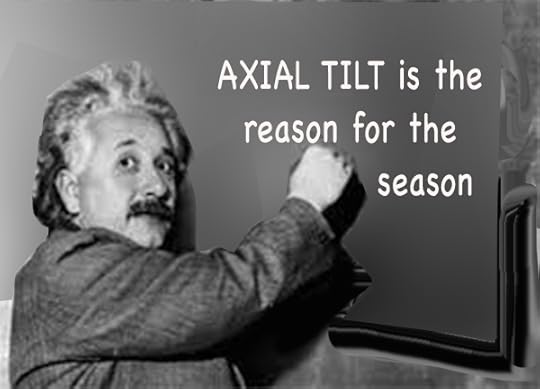 I came across some older notes on metaphor, and I had an idea for a little Solstice contest.
I came across some older notes on metaphor, and I had an idea for a little Solstice contest.
We don’t celebrate any religious holidays, but that axial tilt thing does make us howl at the moon and so I’m going to give something away. Before I get to the contest, I need to refresh your memory about metaphor:
A metaphor is a figure of speech which makes an implicit, implied or hidden comparison between two things or objects that are different, but have some characteristics in common. That is, a word for one idea or thing is used in place of another word to suggest a likeness between them. Metaphor is a non-literal comparison, and can be simple or very complex and drawn out.
One Thing
Another Thing
Example
Source
friend
chaos
Chaos is a friend of mine.
Bob Dylan
bed
taxi
A hospital bed is a parked taxi with the meter running.
Groucho Marx
conscience
compass
Conscience is a man’s compass.
Vincent Van Gogh
advertising
stick
Advertising is the rattling of a stick inside a swill bucket.
George Orwell
passive voice
customer
The passive voice as a shady customer.
Jan Freeman
you
dog
You ain’t nothing but a hound dog.
Elvis Presley
you
diamond
Shine on, you crazy diamond.
Pink Floyd
joke
politician
I don’t approve of political jokes; I’ve seen too many of them get elected.
Jon Stewart
“Metaphors get under your skin by ghosting right past the logical mind.” –Jane Hirschfeld Implied metaphor compares two unlike things, but it does so without mentioning one of them. The comparison is implied or suggested by using a word or phrase that describes the unmentioned term. Examples:
Don’t bark at me like that, you’re frightening the children. (you = mad dog)
Let’s put lipstick on this pig. (ugly/poor object = needs beautification) From Investment Banking for Dummies
For comparison’s sake, a couple similes, where the comparison is more direct (often using ‘like’ or ‘as’):
One Thing
Another Thing
Example
Source
people
inanimate objects
I would track immigrants like FedEx packages.
Chris Christie
love
beauty
My love is like a red, red rose.
Robert Burns
person
worthless creature
We’re going to beat [Hillary Clinton] like a rented mule.
John McCain
person
oddity of nature
There’s not a one of us who isn’t as twisted as a duck’s dick.
Lisa Kleypas (Blue Eyed Devil)
So here’s the little contest: Come up with a metaphor or simile — one of your own, or one from a published source (which you must name, if that’s the case) which you find to be humorous. I’ll pick some finalists, and everybody can vote for a favorite. And that person will get a pile of books from me. Which books — depends on the person who wins. But a nice pile of books. So go out and metaphorize.
Questions? This would be the place to ask them.
Tweet
The post winter solstice is coming, and a present for you appeared first on storytelling.

December 10, 2015
Mea Culpa UPDATED
UPDATED
Since I wrote the original post under this title (yesterday) there have been a handful of replies here (thanks, everybody), one on Facebook, and a half dozen or so emails. I’m going to try to synthesize all of that into a cohesive whole. Please bear with me.
The issue: I hear from readers who are confused or irritated by unresolved storylines in The Gilded Hour. Specifically two storylines seem to raise the most questions.
The Russo children (where was Tonino, and where is Vittorio?)
The identity of the individuals who were responsible for the deaths of at least six women.
Before I address these issues, there were some good comments I should address. The general gist is: Don’t worry about what your readers think. It’s a series. Just keep writing! Why am I not taking this advice? If a lot of readers come to me with the same question, it means I failed to make something clear. And I don’t like that. So this is my final effort to address the issues, in detail. I’ll start with a couple of representative emails.
First, an email that came in this morning from Nancy. It’s like a lot of email I get recently.
Dear Sara I just finished your new book the Gilded Hour. I have a question. On page 696,after looking for a killer through most of the other 695 pages Oscar says, no reasons to give up now, in reference to finding the killer. Then there is not another word in the remaining 36 pages about finding the killer. What???? Who was the killer??? It turned out to be a very disappointing read I must say.
I am hoping for a reply .
Nancy
This next email is from Sandra, who is also curious, but in more general terms.
Hi Rosina/Sara
I have never written to an author before but I had to write you. I loved The Gilded Hour and was heartbroken to finish it. When I saw on your webpage that “a new series was launched” I assume that means you are going to write more. Whew! I just have to know what happens to all these people. I am in love with them and am imagining futures for each one of them. I want to read more about Anna & Jack, Sophie & Cap, Rosa & her siblings, Ned, Aunt Quinlan, Margaret, Elise. I feel like I know them now so want to follow their lives.
Some truths about this whole storytelling business, to start:
First Big Truth: It’s really uplifting to hear from readers, even when they are irritated. It means the story got under that reader’s skin. That’s what I strive for.
Second Big Truth: Sometimes confusion has to do with the reader, and not with the book. I have had questions from readers who, while supportive and enthusiastic, didn’t read very closely and for that reason are confused. A memorable example: the reader who thought that Hannah was pregnant by her brother. There’s next to nothing I can do to respond in a constructive way to such questions.
Third Big Truth: These days instant gratification is the thing. Readers used to wait for months for the next chapter in a book they were reading, dying of curiosity, talking about the story with other people who were following the series. No more. Today it’s possible to binge. You can order all of the books in the Niccolo Rising series or all of Harry Potter and never have to wait to find out what happens next. You can rent or buy every season of E.R. or Friends or Lost or Breaking Bad and watch them one after the other until your eyes pop out. But this is all very new. When I was a kid, you had one chance every year to see The Wizard of Oz when it was on television. That was it. If you missed it, too bad. No way to record anything, no way to order up a movie out of simply curiosity.
When I hear from readers who want answers right now, I have a choice. I can lecture that person about patience (it’s a virtue, apparently) and wax lyrical about the changing world of storytelling. Or I can empathize and say two things: I’m writing as fast as I can, and I hope that the end product will be worth the wait.
These are people who have read the book I wrote and felt strongly enough about it to write to me. That’s good. That’s what I focus on.
Getting down to specifics about the two big questions above: (the Russo children, and the murders.) I start with Voltaire.1

Good storytelling leaves questions open to be considered and answered by the reader or viewer.
It’s true that you haven’t heard in detail about what Tonino went through, and you don’t know where Vittorio is; his adoptive family is gone. Where? Why? You also don’t know how Sophie’s parents died, or why Aunt Quinlan left Paradise. And there are eternal questions about Callie and Ethan.
As a series develops there are more of such questions. You may get answers down the line, and you might not. Shawn pointed out in the comments that there are thousands of people out there who have lived sixty years or longer with no answers about where they came from, why they were put up for adoption, and where their birth parents might be.
Bottom line: No quick answers in real life, or in the way I tell stories.
The question about the murders is, of course, far more pressing. Some people raced through the last part of the book because they just had to know who was responsible … And then were disappointed. Really disappointed. One star irritated.
And I can’t help them. I would suggest that it’s far more interesting to think about the clues (there are a lot of them) and come up with your own theories. So again: I’m just not going to tie everything up in a neat package. I won’t tell everything. I can’t, really, because that just isn’t the way my storytelling mind works. So I have to disappoint those who must know immediately.
The thing is, I do hope that when the next book comes out, irritated and frustrated readers will find that it really was worth the wait.
From Wikipedia: François-Marie Arouet 21 November 1694 – 30 May 1778, known by his nom de plume Voltaire, was a French Enlightenment writer, historian, and philosopher famous for his wit, his attacks on the established Catholic Church, and his advocacy of freedom of religion, freedom of expression, and separation of church and state. Voltaire was a versatile writer, producing works in almost every literary form, including plays, poems, novels, essays, and historical and scientific works. He wrote more than 20,000 letters and more than 2,000 books and pamphlets. He was an outspoken advocate of several liberties, despite the risk this placed him in under the strict censorship laws of the time. As a satirical polemicist, he frequently made use of his works to criticize intolerance, religious dogma, and the French institutions of his day. ↩
Tweet
The post Mea Culpa UPDATED appeared first on storytelling.


